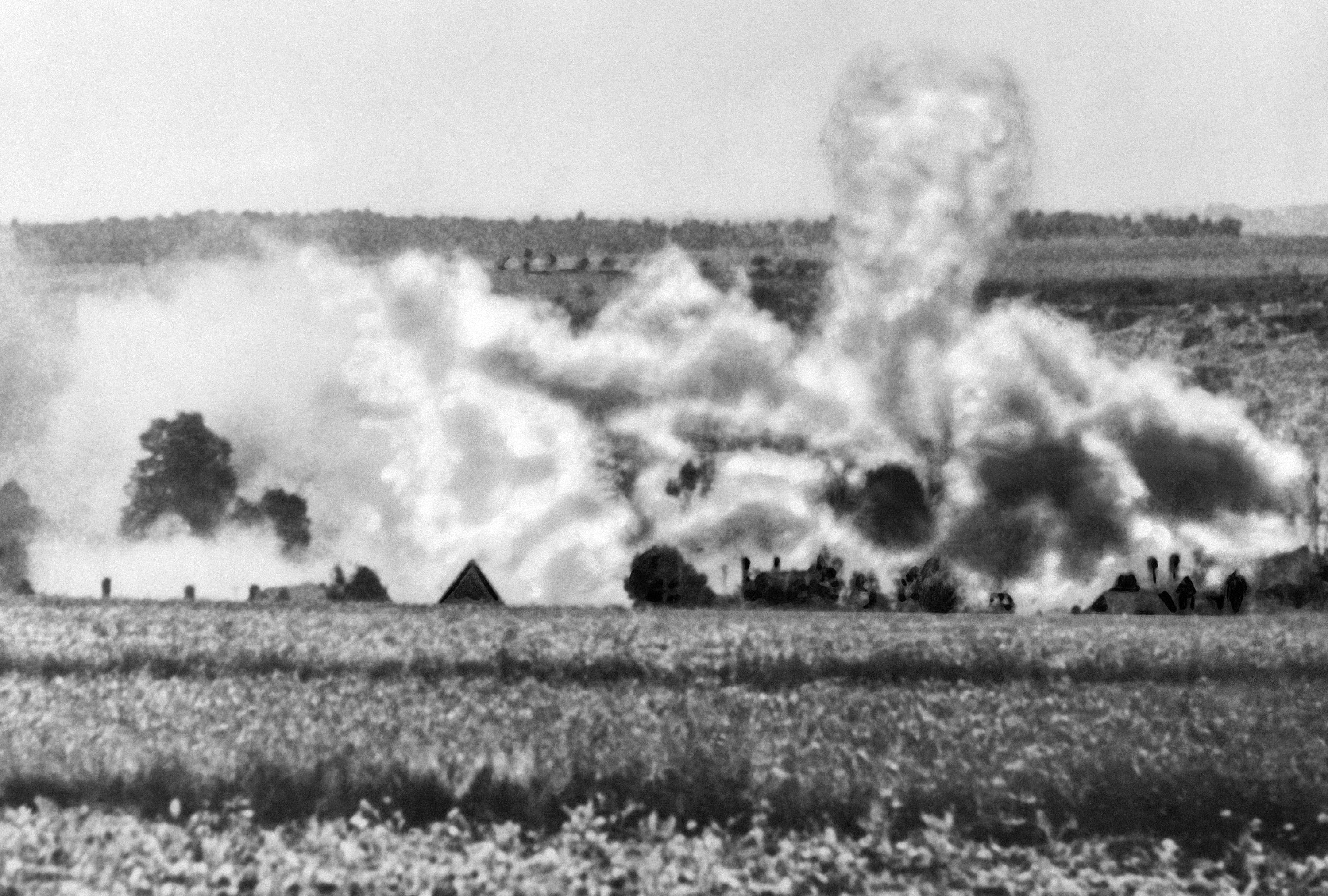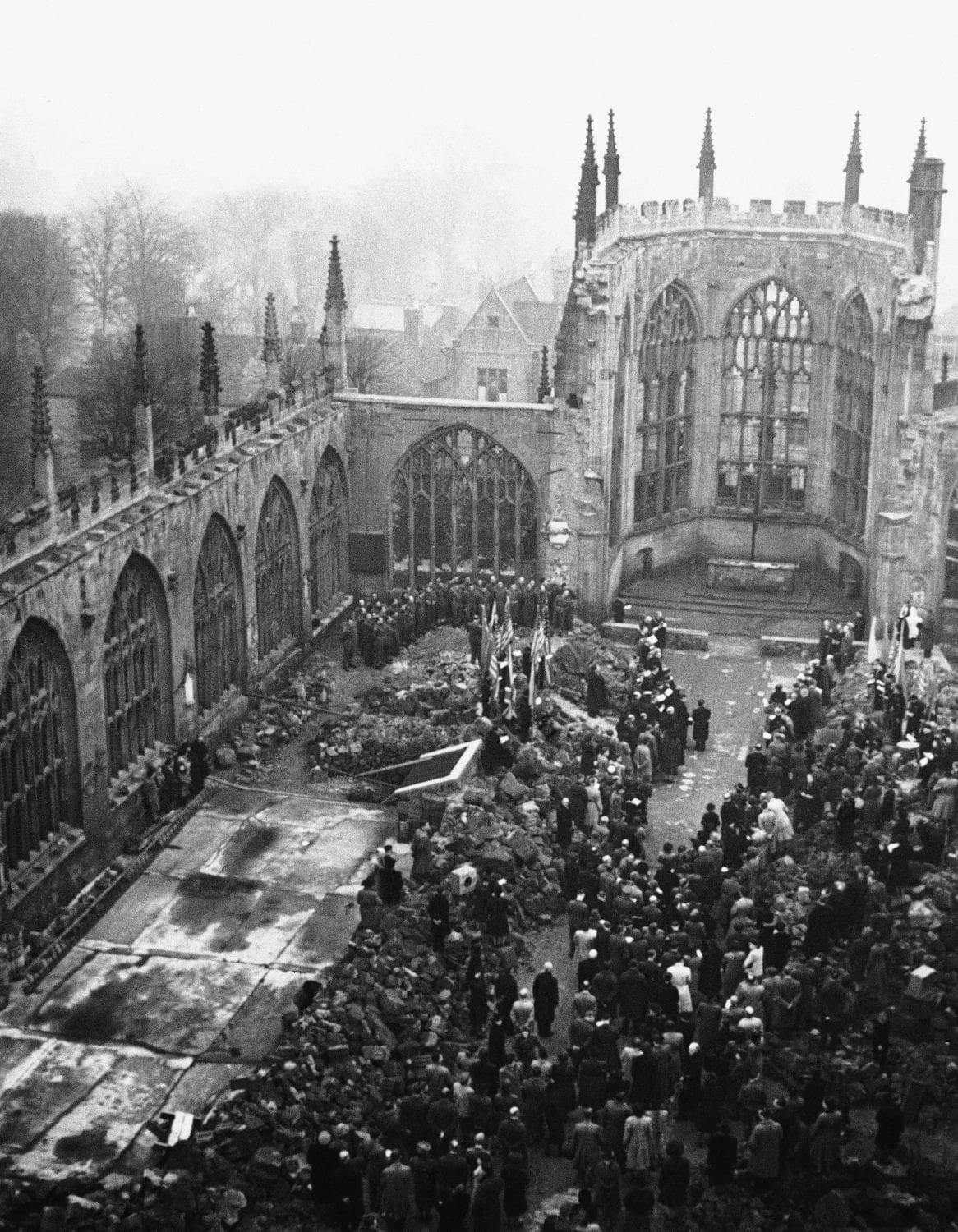10.Cerven 1942 June 10, 1942
The year 2017 marks the 75th anniversary of the tragedy of Lidice, a Roman Catholic village northwest of Prague in Bohemia, a part of the Czech Republic. The village, which was first mentioned in recorded documents of the 14th Century, was leveled on June 10, 1942, by Adolf Hitler’s Nazi troops during World War II.

The village of Lidice, Czechoslovakia, before it was burned to the ground by Nazis on June 10, 1942. Very few escaped the massacre, which was an effort to dig out a group of Czech resistance fighters. (AP Photo/Czech News Agency)
In addition to ordering the troops to destroy the town, Hitler ordered them to shoot all the village men and separate the children from their mothers. All women were sent to Nazi concentration camps, and most of the children either gassed to death or selected to live with German families and be “reeducated” as Germans.

The entire Czech mining village of Lidice, near Kladno, was wiped out by Nazis during World War II on June 10, 1942, on suspicion of harboring the murderers of the S. S. Leader Reinhard Heydrich. Every man in the village was shot. The women were deported to a concentration camp, and most children were gassed in Chelmno. All buildings were razed to the ground and the name of the village crossed from official records. This photo, which shows the village being burned to the ground June 10, 1942, is among several taken of the massacre and destruction by a Czech patriot, Mr. J. Kucera. Forced by Hitler’s Nazis to take photographs of the extermination, Kucera secretly made some prints while he was processing the material under Gestapo control. (AP Photo)
Why did this happen, and why Lidice? A two-word answer: Adolf Hitler.
Hitler, who had come into power in Germany in the 1930s, had masterminded Kristallnacht in 1938, a roundup of Jews across Germany. Among those who supervised the “night of broken glass” was Reinhard Heydrich, whom Hitler subsequently promoted as governor of Bohemia and Moravia (Morava).

Reinhard Heydrich, center, known as the Reichsprotektor of Bohemia and Moravia, on a visit to Paris with Major General of Police Oberg, newly appointed chief of police in occupied France, left, and Commander of Secret Police Dr. Knochen. Heydrich’s death on June 4, 1942, after an assassination attempt, caused mass reprisal executions of Czechs and the wiping out of the Czech village of Lidice. (AP Photo)
Despised as a cruel dictator, Heydrich soon became the target of an assassination plot. The Czech government in exile, led by Edvard Benes in London, sent Czech-resistance paratroopers from London to Prague (Praha) to carry out Operation Anthropoid. The plan ultimately succeeded, with Heydrich dying eight days after being being injured by a grenade thrown during the assassination attempt.
Losing Heydrich so infuriated the Fuhrer that he demanded justice in the form of retribution. Rumors that the paratroopers had a connection to Lidice was all it took. Not only was Lidice retribution for Heydrich’s assassination, but it was also seen as an example to deter any other attacks on the Nazis.
When news reached the rest of the world that Hitler had proclaimed Lidice “erased” from all maps and memory, the world pushed back. Parents named their newborns Lidice, and cities renamed streets, parks, subdivisions and hospitals in memory of Lidice.
Lidice, some historians agree, represented a turning point in the war. The U.S. and other countries entered the conflict.
Lidice has since been rebuilt on a site near the original village. This blog explores its triumph over tragedy.
Copyright 2017 by Elizabeth Cernota Clark

Many notable personalities, including Dr. Edvard Benes, president of Czechoslovakia, unseen, attended a Lidice Commemoration Service in Coventry Cathedral in Coventry, England on March 12, 1944. (AP Photo)
